
Ominous and rapidly-moving storm clouds drove LAMP researchers off the water today. Sudden storms have always been a hazard to St. Augustine mariners in modern times and in antiquity.
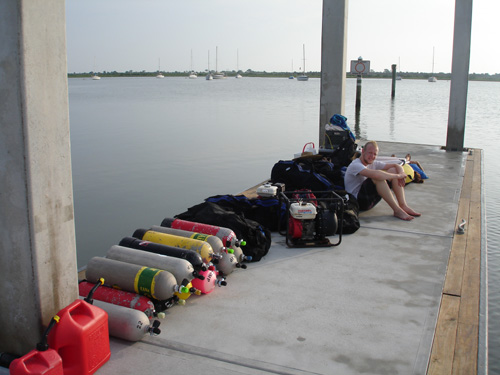
As always, the day begins early in the morning at LAMP headquarters at the St. Augustine Lighthouse & Museum. Our staff and volunteers load up all the gear and transport it to the Lighthouse boat ramp public dock for loading onto the research vessel Roper. Here volunteer diver Florian Funk waits with the gear for the Roper‘s imminent arrival. Florian is a German exchange student who recently attended LAMP’s underwater archaeology MARC class at Pedro Menendez High School. He will be volunteering as a scientific diver for LAMP until he returns to Germany next week.
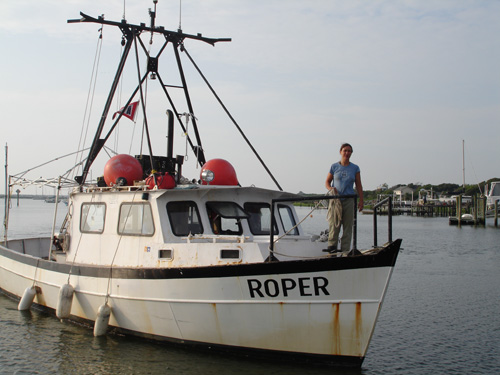
Also on board the Roper today is Norine Carroll, Collections Manager and Associate Researcher at the University of West Florida’s Archaeology Institute. She is visiting us today and is planning on conducting some working dives with us. Norine was one of the first researchers working for the initial St. Augustine shipwreck survey in the 1990s, and at that time she conducted many dives on this shipwreck.
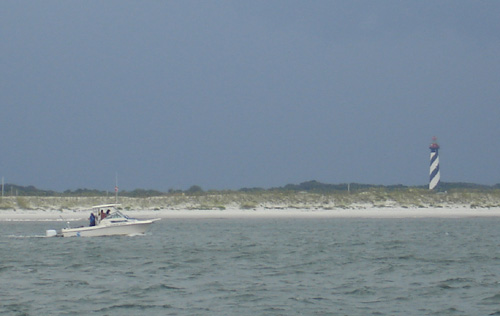
Survey work continues in St. Augustine waters! When the dive boat arrives on site, we stand off to let LAMP’s survey vessel, the RV Desmond Valdes, continue running survey lanes across the area we will be diving shortly. In addition to diving operations, LAMP is conducting remote sensing survey in a variety of areas inshore and offshore. Part of this project entails running very tight lane spacings–5 meters apart–over most magnetic anomalies that have been previously recorded in St. Augustine waters. Survey equipment includes side scan sonar, magnetometer, and sub-bottom profiler. We wait patiently as we watch the Desi run back and forth with its equipment deployed in the water.
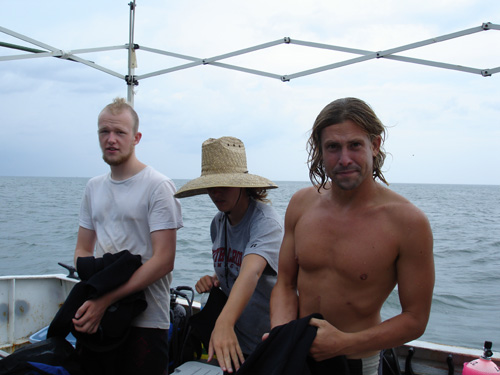
Meanwhile, our divers prepare for the first dive of the day. From left to right are MARC student Florian Funk and Field School students Wendy Drennon and Chris Borlas. Wendy and Chris, along with Kaia Brown, are recent graduates of the Field School who have chosen to remain on the project into July and work as volunteers.

As we move into position over the wreck and attach our stern mooring lines, we can’t help but notice dark storm clouds gathering on the western horizon. A phone call to the Lighthouse gets us talking to a co-worker monitoring an online radar station. It looks like the storm will hit us soon.

The clouds get more massive and darker as we weigh our options. Since we expect it to hit within 40 minutes we have delayed sending divers in the water. We feel that we can safely wait out the storm in the cabin of the Roper . . .
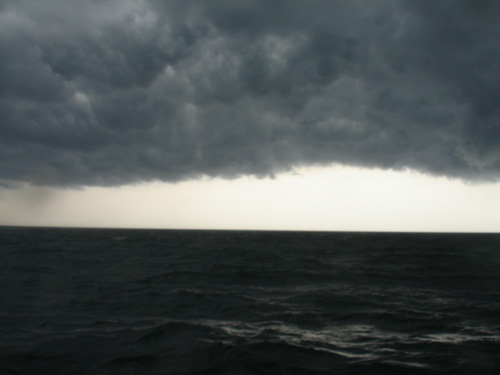
But as the clouds get darker and more ominous, and the wind and seas intensifies rapidly, we decide there’s no reason not to play it safe and cancel today’s diving. The Desmond Valdes, a less protective haven than the Roper, has already pulled in their gear and headed home. Now that the decision has been made it is imperative to act quickly. The first thing to do is to free our stern mooring lines, so that we will swing on our bow anchor into the wind and not take the increasingly pounding seas broadside.

Our crew has been seasoned over the last four weeks at sea. They work rapidly but deliberately to stow away equipment and other items for what will likely be a rough ride home.

On the roof of the cabin, Chris hurriedly lashes down empty lift boxes and other items while the U.S. Lighthouse Service pennant whips in the wind.
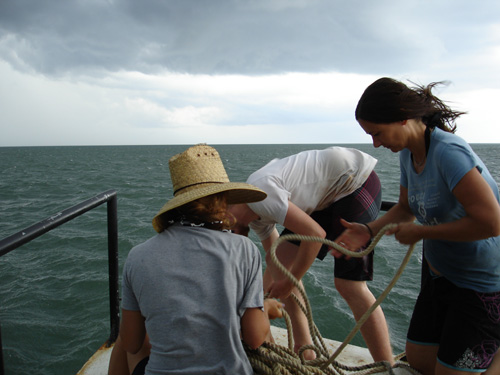
The final step before getting underway is to pull in the bow anchor, and feed the line into the anchor rope locker. Here Wendy, Florian, and Norine take charge.
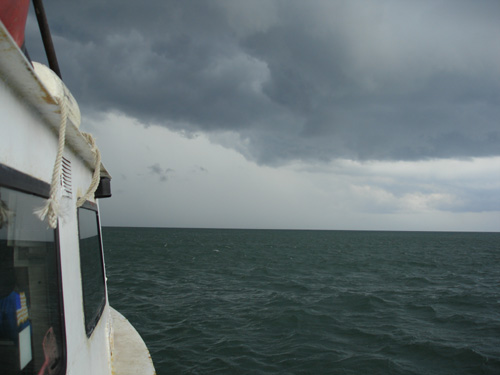
With that we are underway. We made it back to shore though we pulled all hands into the cabin when the lightning started. The bad news is that we got no work done on the shipwreck today, other than completing a survey project (which is a good accomplishment). The good news is that we all survived another storm at sea. Working on the open face of the Atlantic, here offshore America’s oldest port, is not an easy endeavor. Sudden storms can wreck havoc with our vessels just as they did in the Age of Sail. We have successfully run away in order to survive to work another day.

